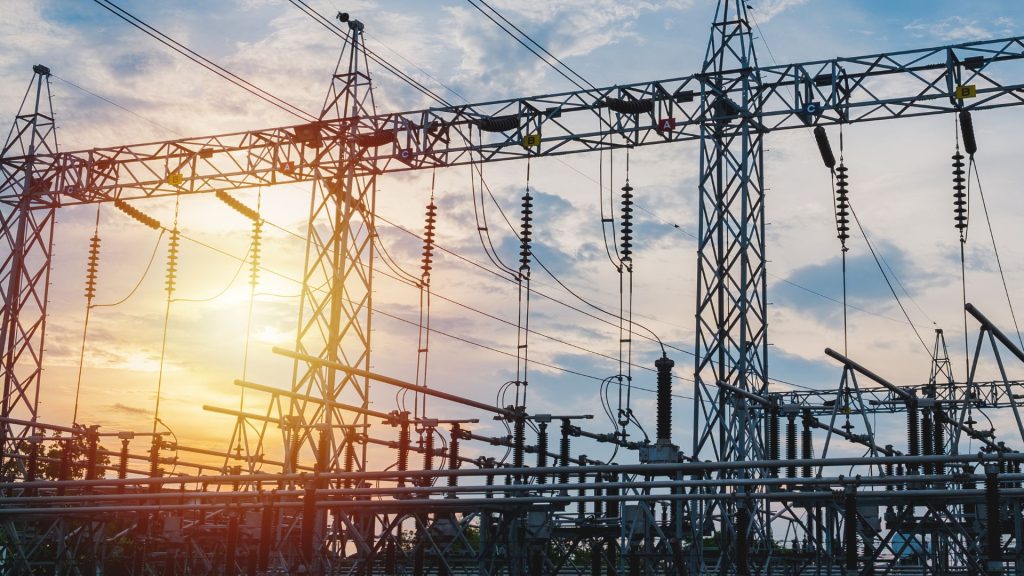
The Path Forward With Genergy and Small Modular Reactors
04-02-2025, researched by Wolfgang Kovacek
“Small Modular Reactors” or “SMR”s or “SNR”s (Small Nuclear Reactors) and a new smaller nuclear reactor option that has great potential because it reduces risks associated with nuclear power generation by making the reactors much more compact and efficient. The most important benefit of nuclear power is the ability to work almost 24 hours a day regardless of weather.
God’s Energy Technology “Genergy” also operates almost 24 hours a day called “Base load” in the energy industry.
Texas stands at a critical energy crossroads. As the state’s power grid struggles with “rapidly growing power demands,” policymakers must decide which technologies to invest in for a more stable and affordable energy future. A recent Inside Climate News investigation revealed that treating the Permian Basin’s oilfield wastewater alone could require up to 26 gigawatts of additional power – more than the total generation capacity of most U.S. states. How can Texas meet this challenge while ensuring reliability and affordability?
The WaterNet Proposal for the State of Texas from G-SHIP LLC (a God’s Energy Technology Company) includes not 26 GW of power but 73 GW to desalinate the 20,000,000 acre feet of water for the State of Texas to solve the Water Shortage and also to refill the aquifers with clean NEW water NOT recycled.
The Energy Predicament
Is the Texas grid truly in crisis?
Following the catastrophic 2021 winter storm that left millions without power and resulted in hundreds of deaths, the vulnerabilities in Texas’s independent power grid became painfully apparent. The Federal Reserve Bank of Dallas estimated the economic damage at $80-$130 billion. With Texas’s population growing rapidly and industrial demands increasing, the Electric Reliability Council of Texas (ERCOT) projects electricity demand to increase by more than 30% by 2035.
Can Small Nuclear Reactors (SNRs) solve Texas’s energy problems?
Some have proposed deploying Small Nuclear Reactors across Texas. These smaller versions of traditional nuclear plants promise carbon-free electricity generation with smaller footprints than conventional nuclear facilities. According to Inside Climate News, companies like Natura Resources have already secured permits to build such reactors, with the first unit planned at Abilene Christian University for research approved by the US Department of Energy.
However, SNRs come with significant challenges:
- High capital costs (approximately $12 million per megawatt)
- Long implementation timelines (often years to decades)
- Nuclear waste disposal concerns
- Vulnerability to extreme cold (as seen in nuclear plant shutdowns during the 2021 winter storm)
What alternative is Genergy proposing?
Genergy (God’s Energy) offers a fundamentally different approach at a fraction of the cost – just $1 million per megawatt compared to SNRs’ $12 million. The system works in conjunction with The WaterNet to generate electricity while transporting and purifying water.
The Genergy Advantage
How does Genergy compare to SNRs on key performance metrics?
Genergy’s proposed system offers several key advantages:
- Massive Energy Capacity: The WaterNet is designed with a total capacity of 73 gigawatts, far exceeding the 26 gigawatts needed for wastewater treatment mentioned in the Inside Climate News article because the process of separating water from waste needs enormous power plant capacity.
- Net-Positive Energy Production: Unlike most water management systems that consume electricity, Genergy’s approach actually generates electricity while delivering water. According to The American Society of Civil Engineers’ (ASCE) Energy-Water Nexus report, traditional water transportation and treatment typically accounts for 3-4% of national electricity use. Genergy flips this equation by producing rather than consuming energy.
- Cold Weather Resilience: After the 2021 winter disaster, the Federal Energy Regulatory Commission (FERC) documented how nuclear and natural gas facilities failed due to freezing conditions. Genergy has a decentralized system that offers greater resilience against extreme cold events as well as a design that is protected from the cold by being inside of an insulated building.
- Distributed Energy Benefits: The U.S. Department of Energy’s Grid Modernization Initiative has emphasized the advantages of distributed energy resources for improving grid reliability. Genergy’s system would distribute energy production across Texas rather than concentrating it at a few vulnerable facilities.
73 Gigawatts Is Not A Challenge for Genergy
Genergy’s system is built like the famous children’s toys; “LEGOS”. Tiny modules snap together to produce incredible projects that sometimes boggle our minds. But the pieces are incredibly small and simple to use. Small modular units that use very common parts available everywhere and construction that every construction company in America does daily are the reason Genergy knows Texas will host one of the largest electrical generation projects in history.
For context, the entire installed generating capacity of Texas was approximately 122 gigawatts in 2023, according to ERCOT. The largest engineering firms, architect firms, and construction firms in Texas are confident and excited with The WaterNet because 73 gigawatts represents a 60% increase in the state’s generating capacity while employing tens of thousands.
The capacity comes from the hydroelectric potential created by moving water through elevation changes from the Gulf Coast to inland areas like Lubbock. According to the U.S. Geological Survey, hydropower is among the most efficient energy generation methods, with modern turbines converting more than 90% of available energy into electricity.
Economic and Environmental Considerations
Which approach offers better long-term economics?
From a cost perspective, the contrast is stark:
- SNRs: $12 million per megawatt with stable or increasing costs over time
- Genergy: $1 million per megawatt with costs decreasing 1% annually for 40 years
The Brattle Group, an economic consulting firm specializing in energy markets, has consistently found that projects with declining cost curves tend to attract more investment and create more economic value than those with flat or increasing cost profiles.
How do the environmental footprints compare?
Both approaches offer low-carbon electricity generation, but they differ significantly in other environmental aspects:
- SNRs produce radioactive waste that requires secure storage for thousands of years. The Nuclear Energy Institute acknowledges this as an ongoing challenge for the industry.
- Genergy creates zero waste products. Genergy recycles or vaporizes extracted materials using Electric Arc Furnace (EAF) and other technology. The American Chemistry Council has documented how modern recycling technologies can recover valuable resources from what was previously considered waste.
Weighing the Evidence
As Texas officials evaluate these competing visions for the state’s energy future, they must carefully weigh factors including cost, timeline, reliability, environmental impact, and long-term economic benefits. The choice between Small Nuclear Reactors and Genergy’s alternative approach represents fundamentally different paths forward.
The Scripture in Proverbs 14:15 reminds us: “The simple believe anything, but the prudent give thought to their steps.” Texas leaders would be wise to thoroughly investigate these claims, conduct independent technical validation, and make their decision based on rigorous evaluation rather than merely following technological trends.
Sources:
- Inside Climate News: https://insideclimatenews.org/news/24032025/texas-oilfield-wastewater-treatment-small-nuclear-reactors/
- Federal Reserve Bank of Dallas: https://www.dallasfed.org/
- Electric Reliability Council of Texas (ERCOT): https://www.ercot.com/
- American Society of Civil Engineers – Energy-Water Nexus Report: https://www.asce.org/
- Federal Energy Regulatory Commission (FERC): https://www.ferc.gov/
- U.S. Department of Energy – Grid Modernization Initiative: https://www.energy.gov/grid-modernization-initiative
- U.S. Geological Survey – Hydropower Information: https://www.usgs.gov/
- The Brattle Group – Energy Economics: https://www.brattle.com/
- Nuclear Energy Institute: https://www.nei.org/
- American Chemistry Council: https://www.americanchemistry.com/
- Brookings Institution – Infrastructure Reports: https://www.brookings.edu/
- Genergy: www.gnrg.us
- The WaterNet: www.thewaternet.com
